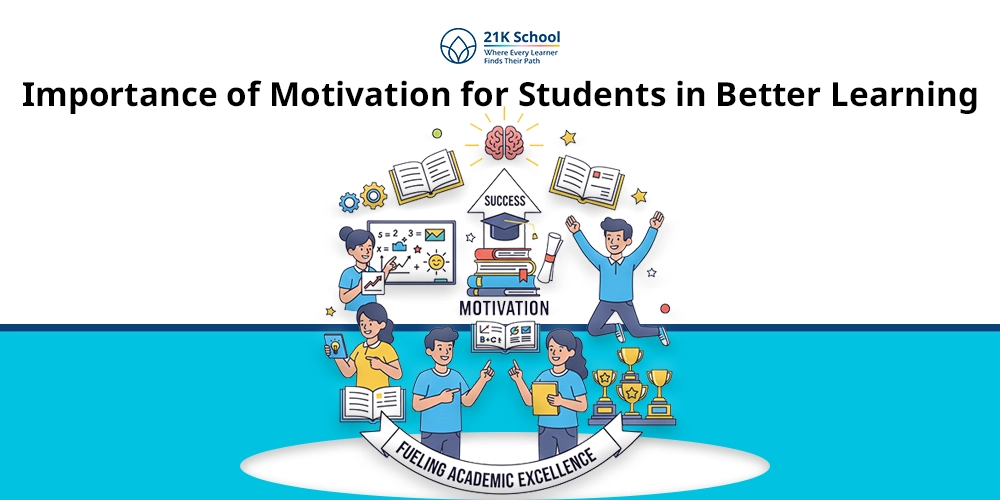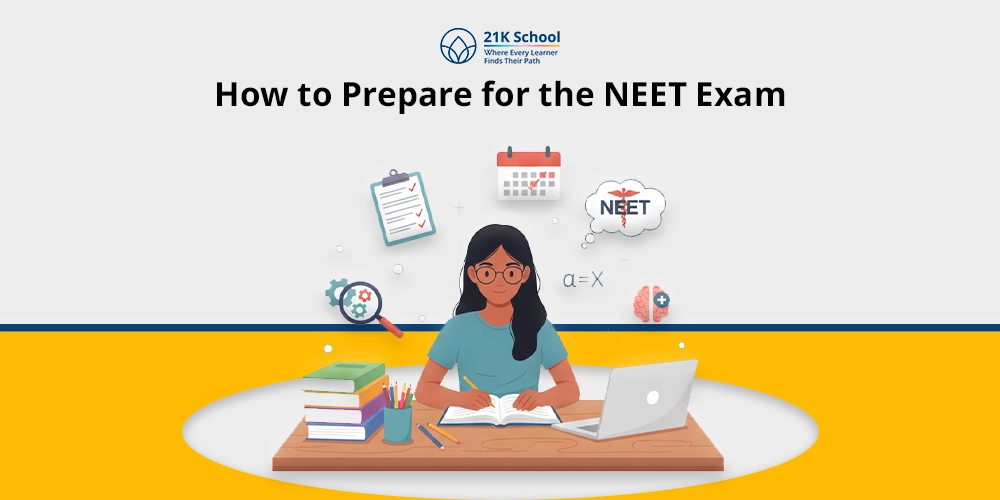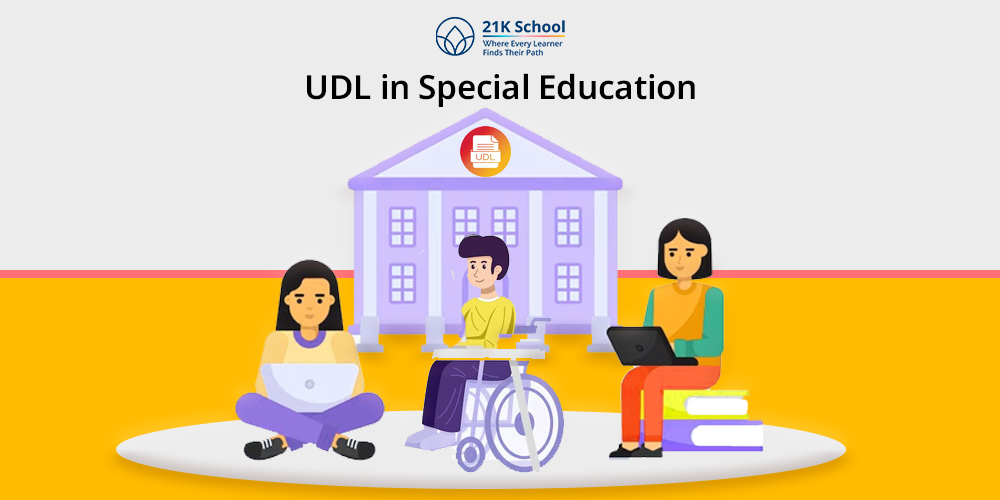
Do you know how UDL is effective for students with special education?
Universal Design for Learning (UDL) is an educational framework that contains some sets of principles that enhances students’ ability to learn, present and engage with the material. UDL is designed to meet the diverse needs of students, promoting a flexible and inclusive learning environment.
Through UDL teachers can create lessons that meet the diverse needs of each student by following a set of guidelines. It provides equal and flexible education to students with disabilities to study at their own pace and learning style.
UDL is based on the idea that curriculum should be developed with students’ diverse needs, learning preferences and strengths. UDLs primary objective is to create engaging, accessible learning opportunities that allow students to demonstrate their knowledge in a number of ways.
Contents
What is UDL in Special Education?
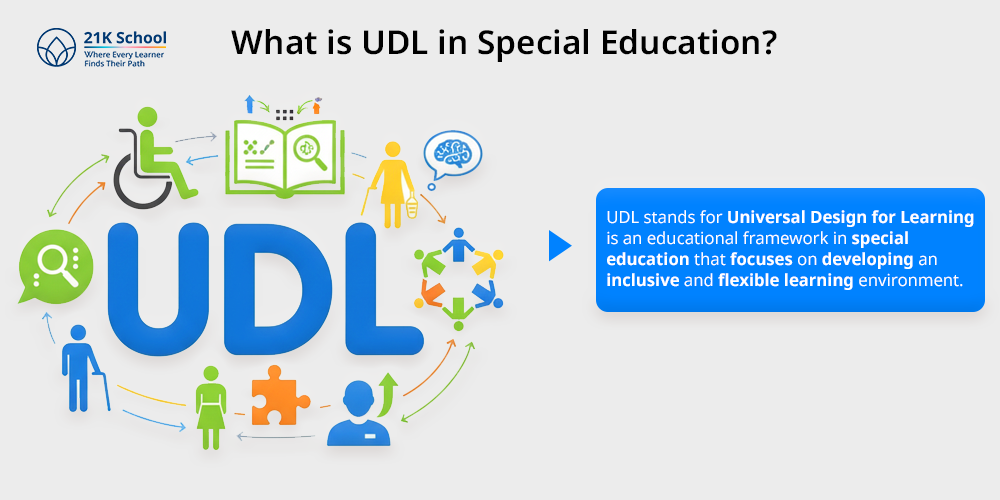
UDL stands for Universal Design for Learning is an educational framework in special education that focuses on developing an inclusive and flexible learning environment.
The main aim of UDL in special education is to meet the diverse needs of learners, providing them with differentiated learning methods. The UDL framework was first introduced by David H. Rose, Ed.D. of the Harvard Graduate School of Education and the Centre for Applied Special Technology (CAST) in the 1990s.
This teaching method focuses on providing students with specific training and providing them with personalised learning. UDL helps students with disabilities to develop creative thinking skills as well as enhances their problem-solving skills .
The goal of UDL is to reduce learning barriers by providing a range of expressive and representational channels. This approach ensures that every student, including those with learning disabilities , has an equal chance to succeed in the general education curriculum.
UDL and Policy Frameworks in India
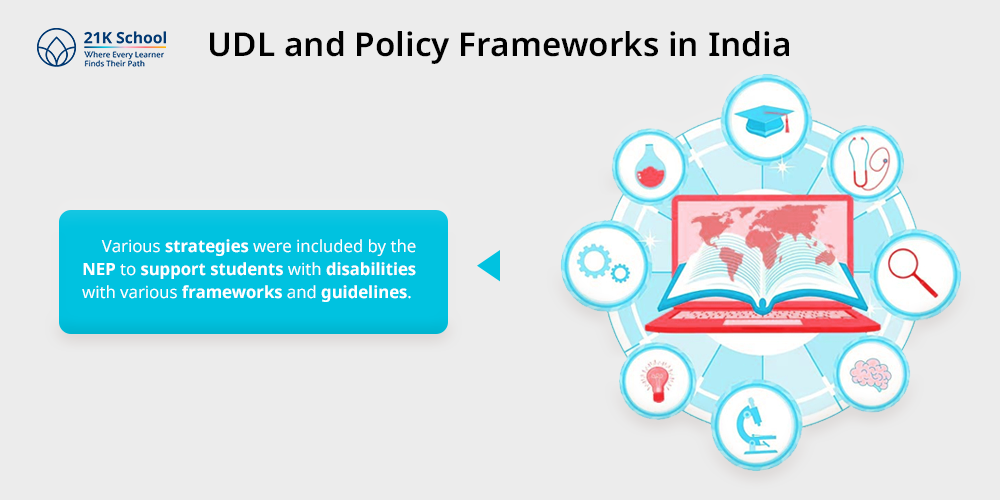
In India Universal Design for Learning (UDL) places a strong emphasis on inclusive education by giving all students including those with disabilities fair access to education.
The National Education Policy (NEP) 2020 also focuses on the adoption of UDL practices to improve learning outcomes and lower the barriers in the classrooms.
The Rights of Persons with Disabilities Act of 2016, also plays an essential step by recognizing the need for accessible learning environments and encouraging inclusion in education. Various strategies were included by the NEP to support students with disabilities with various frameworks and guidelines.
Principles of UDL in Special Education
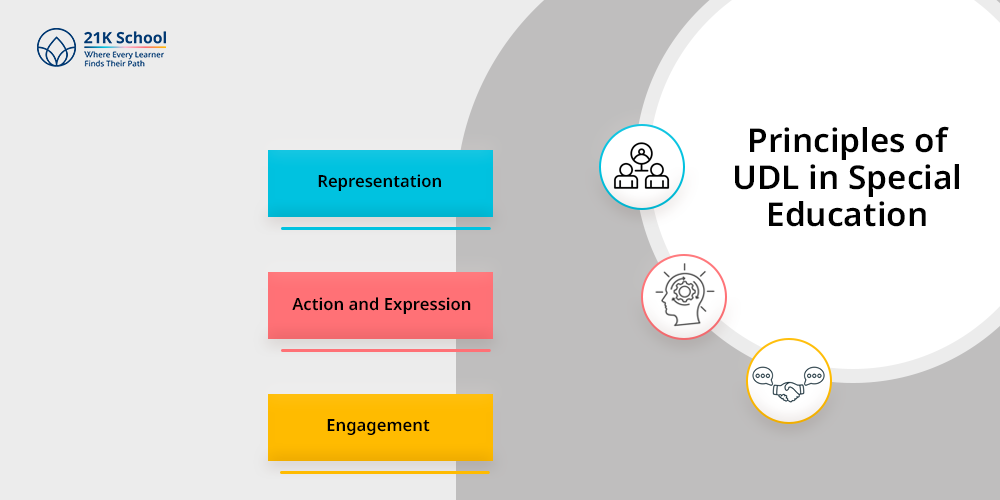
Universal Design Learning (UDL) has three principles, known as representation, action and expression, and engagement, which acts as a tool to provide teachers with the ability to develop and create a flexible learning environment that meets the diverse needs of students.
The main aim of UDL is to make education accessible and simpler for every student with the same educational curriculum . The following are the principles of UDL in special education.
1. Representation
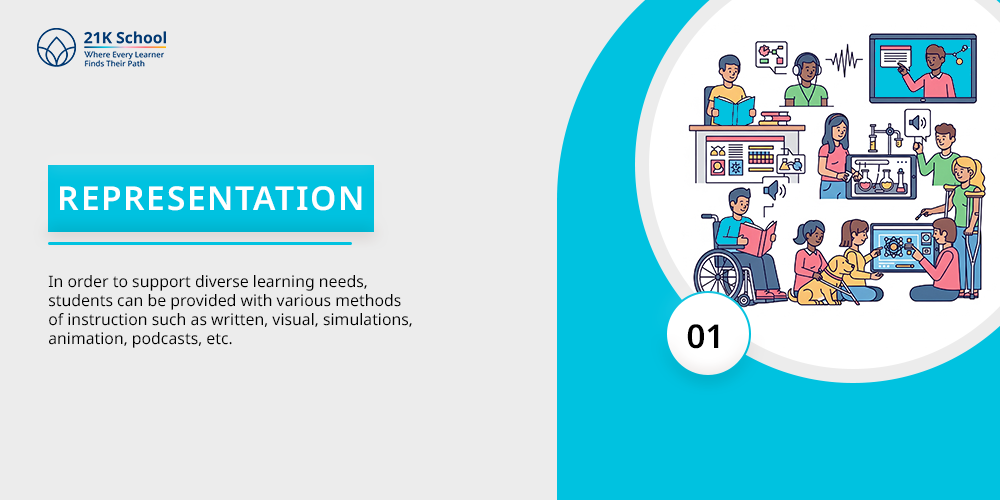
Representation is a major principle that provides students with a range of learning methods . It recognises that the view of different people and their ability to comprehend information is different.
In order to support diverse learning needs, students can be provided with various methods of instruction such as written, visual, simulations, animation, podcasts, etc.
This helps students to engage with the course content in such a way that it suits their learning preferences and needs.
2. Action and Expression
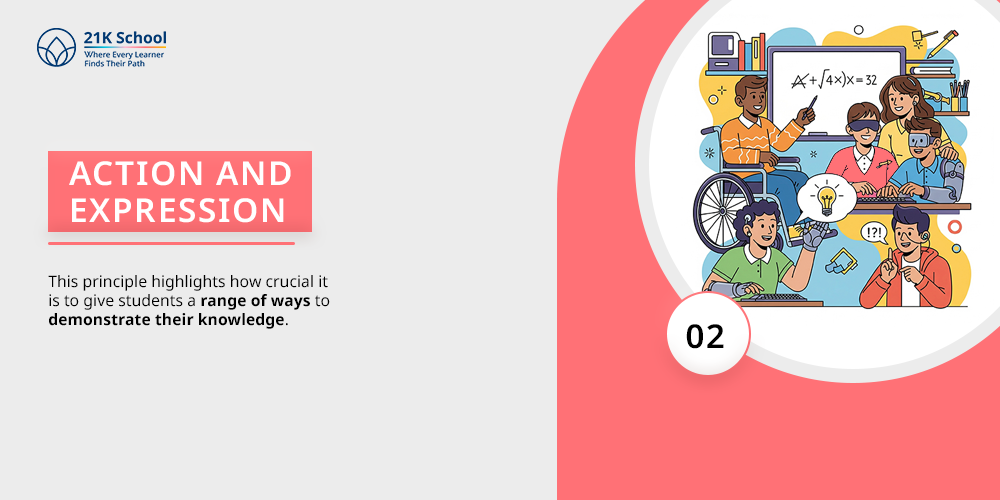
This principle highlights how crucial it is to give students a range of ways to demonstrate their knowledge. It recognises that when it comes to sharing what students have understood with their varying skills and preferences.
This method provides flexibility to students to choose from a wide range of assessments such as videos, animation, writing, etc. Multiple methods of action help students to enhance their confidence and boost their problem-solving techniques .
3. Engagement
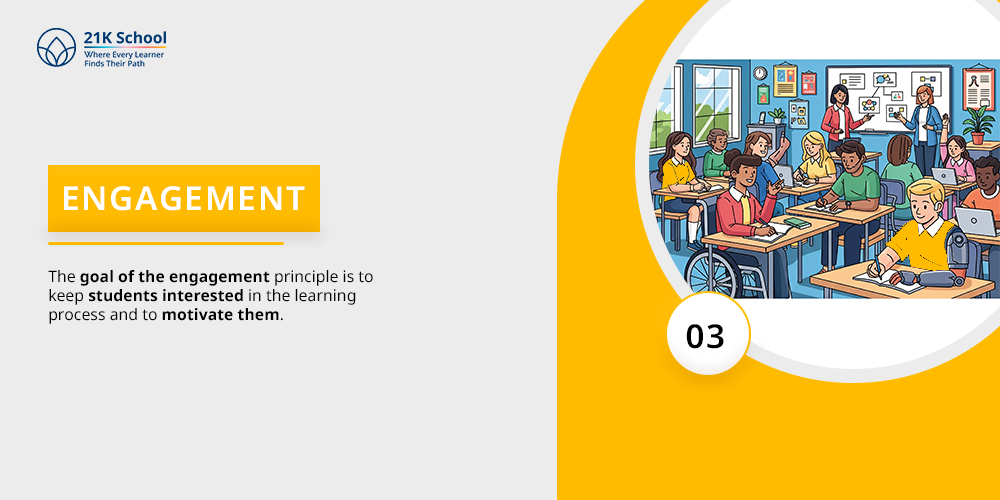
The goal of the engagement principle is to keep students interested in the learning process and to motivate them.
According to these principles, when students are involved and engaged in their education, they are more likely to learn, which helps in promoting lifelong learning .
This method helps in creating a collaborative learning environment , which promotes teamwork and allows students to learn from real-world experience.
Importance of UDL in Special Education
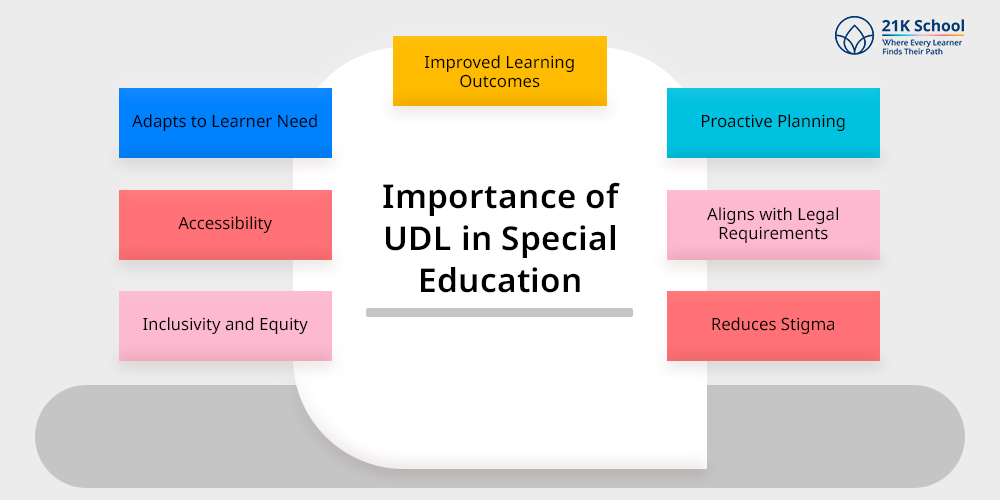
Universal Design for Learning (UDL) is important in special education because it promotes inclusivity and ensures that all students, regardless of ability or disability, have an equal opportunity to learn.
UDL makes sure that students with disabilities can grasp equal educational contexts within the same syllabus .
UDL helps in promoting inclusive classroom and making sure that every student is treated equally. Here are the mentioned importance of UDL in special education.
1. Inclusivity and Equity
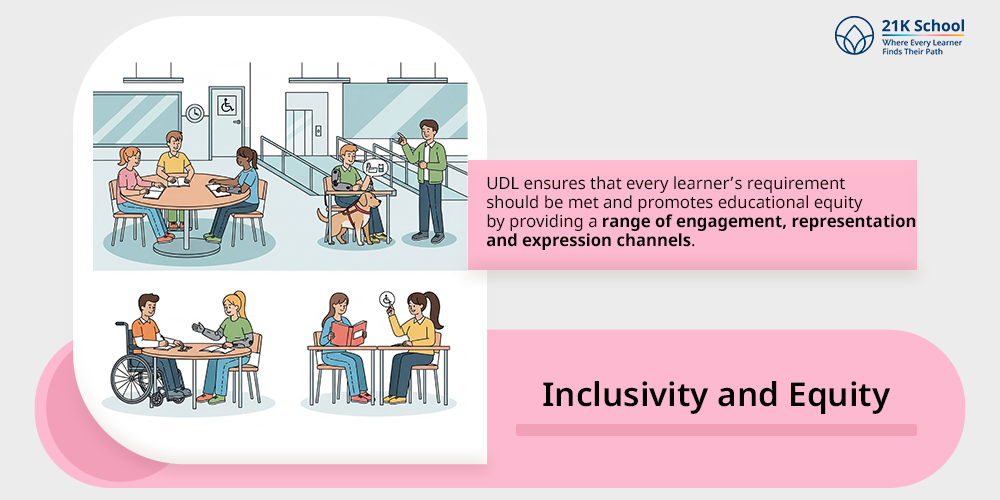
UDL helps in promoting an inclusive learning environment to all students including those with disabilities, through which they can participate in the educational process.
UDL ensures that every learner’s requirement should be met and promotes educational equity by providing a range of engagement, representation and expression channels.
The benefits of inclusive learning foster a sense of belongingness and community among students.
2. Accessibility
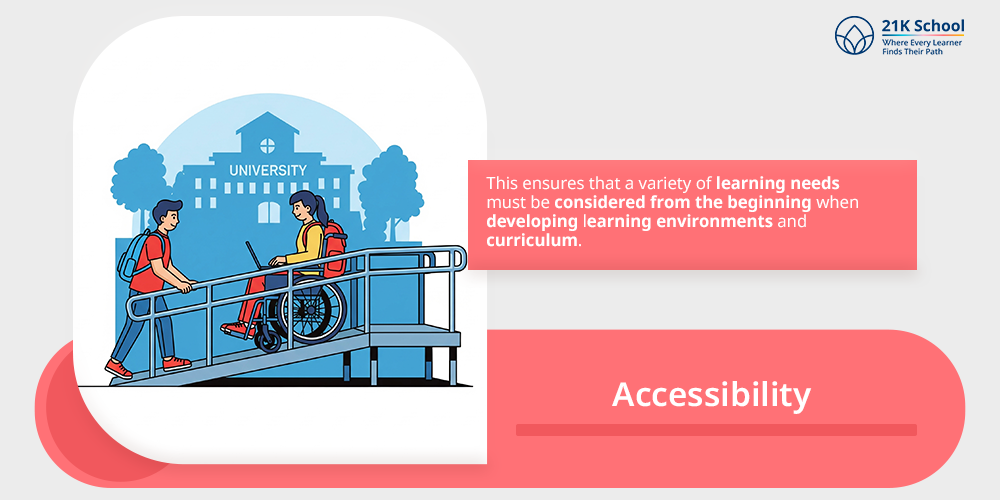
One of UDL’s primary goals is to provide students with equal accessibility to learning. This ensures that a variety of learning needs must be considered from the beginning when developing learning environments and curriculum.
Students with disabilities can access the same learning opportunities and content as their peers through a range of formats and resources, which helps in promoting peer-to-peer-learning .
3. Adapts to Learner Need
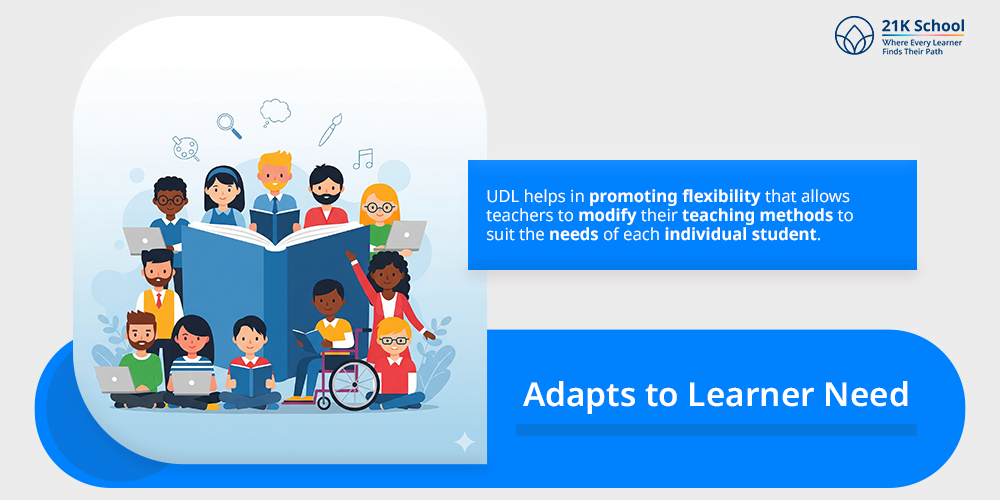
UDL recognises that every learner has different strengths, challenges and preferences. UDL helps in promoting flexibility that allows teachers to modify their teaching methods to suit the needs of each individual student.
This helps in enhancing students’ knowledge retention and allows them to study as per their convenience. This adaptability is particularly helpful in special education, where students might need different strategies to be successful.
4. Improved Learning Outcomes
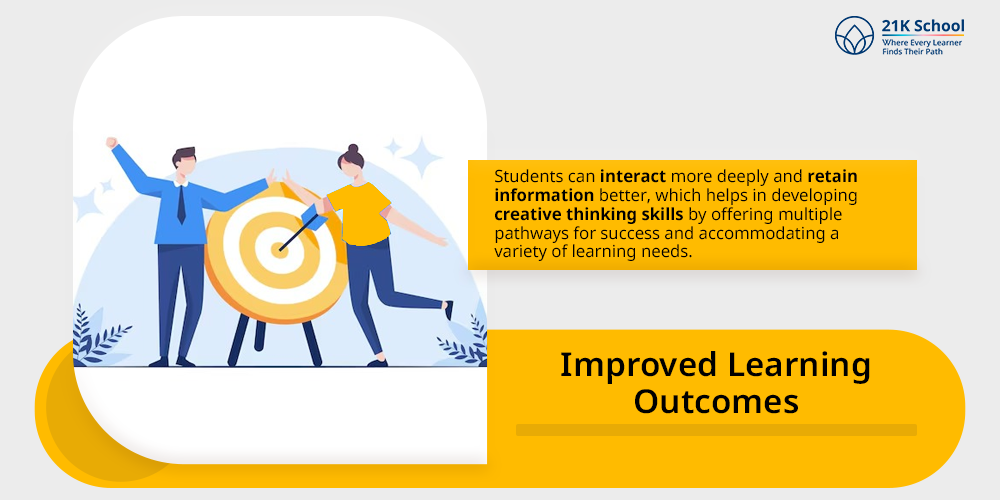
UDL principles help in enhancing learning outcomes of students, especially for children with disabilities.
Through UDL, students can interact more deeply and retain information better, which helps in developing creative thinking skills by offering multiple pathways for success and accommodating a variety of learning needs.
This promotes self-paced learning and reduces student’ stress through interactive class sessions.
5. Proactive Planning
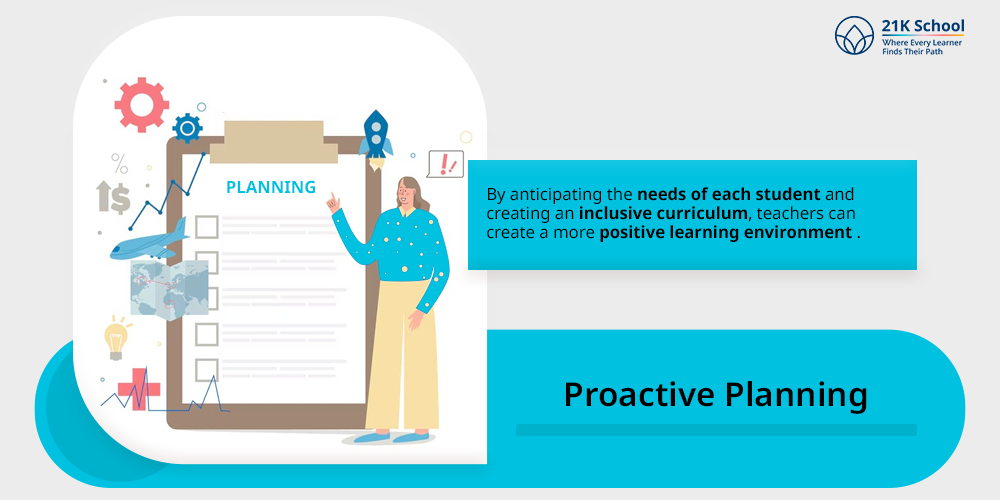
UDL encourages teachers to proactively plan for diversity in the classroom rather than reacting to issues as they arise. By anticipating the needs of each student and creating an inclusive curriculum, teachers can create a more positive learning environment .
This allows children with disabilities to see challenges as opportunities and develop effective strategies to overcome the problems.
6. Aligns with Legal Requirements
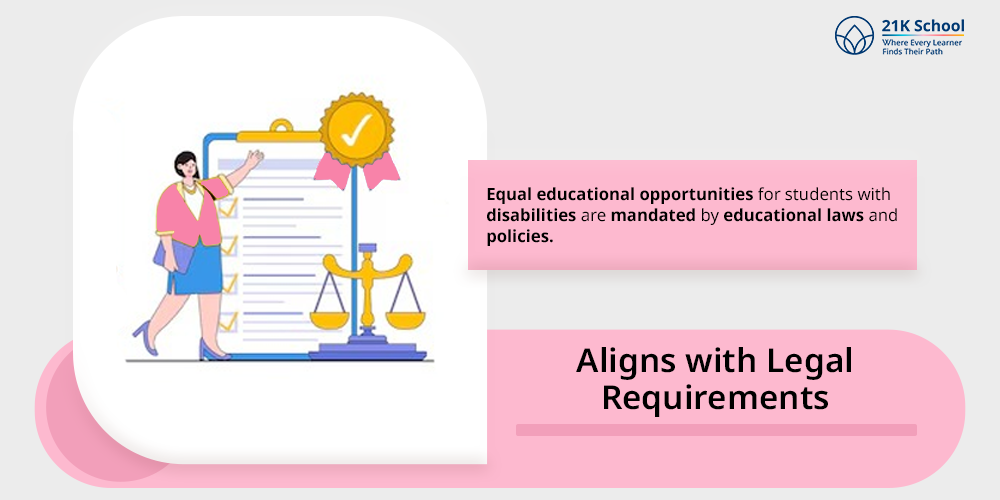
Equal educational opportunities for students with disabilities are mandated by educational laws and policies.
By supporting inclusive learning and ensuring that all students receive the support they need UDL complies with these legal requirements. Every country and state has different legal requirements. It is essential to check them and provide them with effective strategies.
7. Reduces Stigma
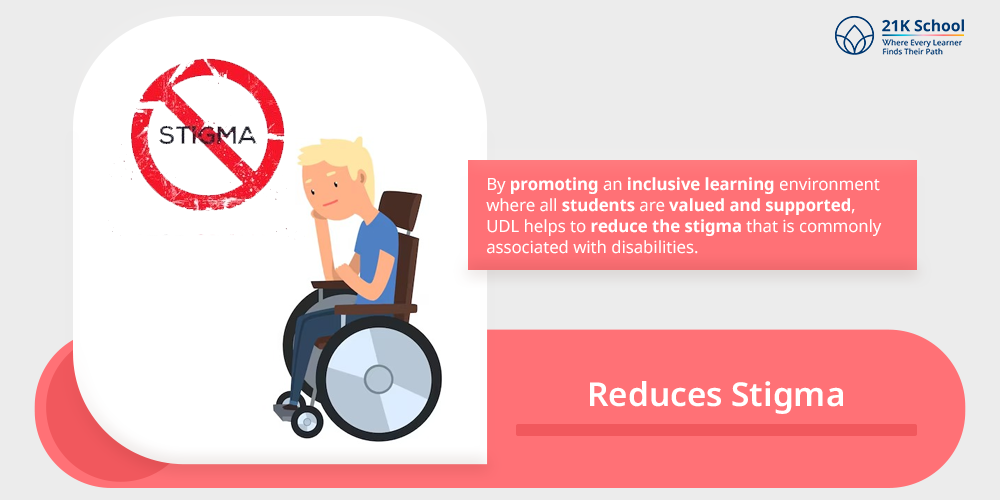
By promoting an inclusive learning environment where all students are valued and supported, UDL helps to reduce the stigma that is commonly associated with disabilities.
Giving students with disabilities the same opportunities and resources as their peers helps them to develop empathy and collaboration skills .
5 Benefits of UDL in Special Education
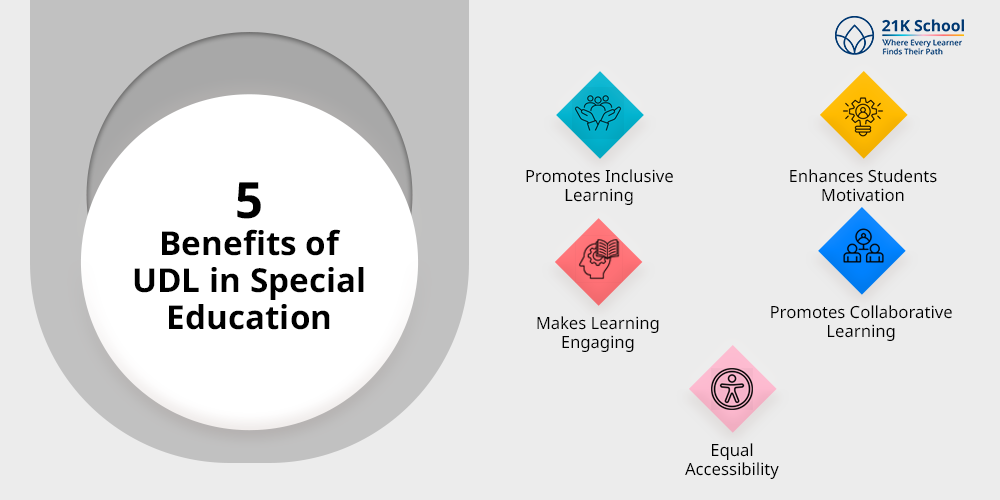
UDL provides various benefits to students, enabling them to learn in a normal class setting with their peers. UDL focuses on providing students with specific training and tailored education, enabling them to study as per their own comfortability.
The benefits of UDL help in making a more effective and supportive educational environment for all students irrespective of any challenges. Here are the benefits of UDL in special education.
1. Promotes Inclusive Learning
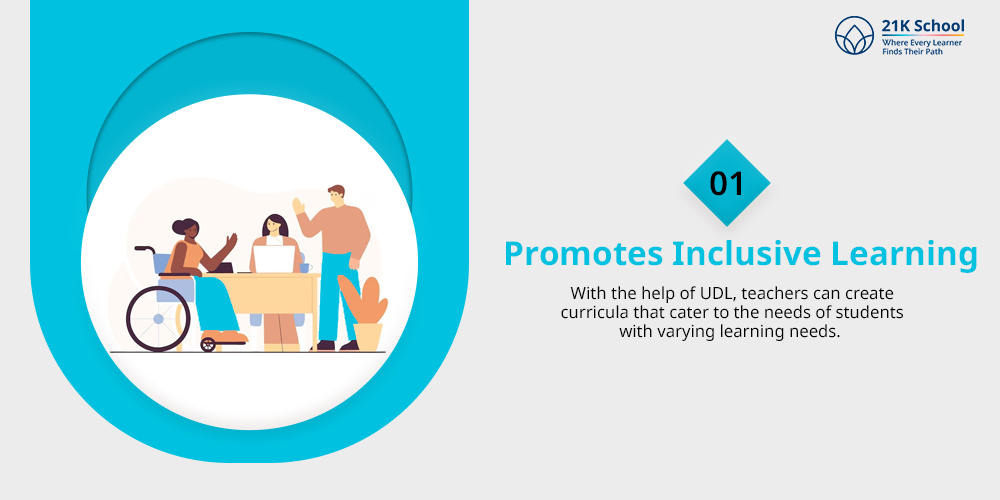
UDL fosters an inclusive learning environment by ensuring that all students, regardless of their abilities or disabilities, can participate fully in the educational process.
With the help of UDL, teachers can create curricula that cater to the needs of students with varying learning needs. The benefits of inclusive education allow them to engage, represent and express themselves in an equal classroom setting.
2. Enhances Students Motivation
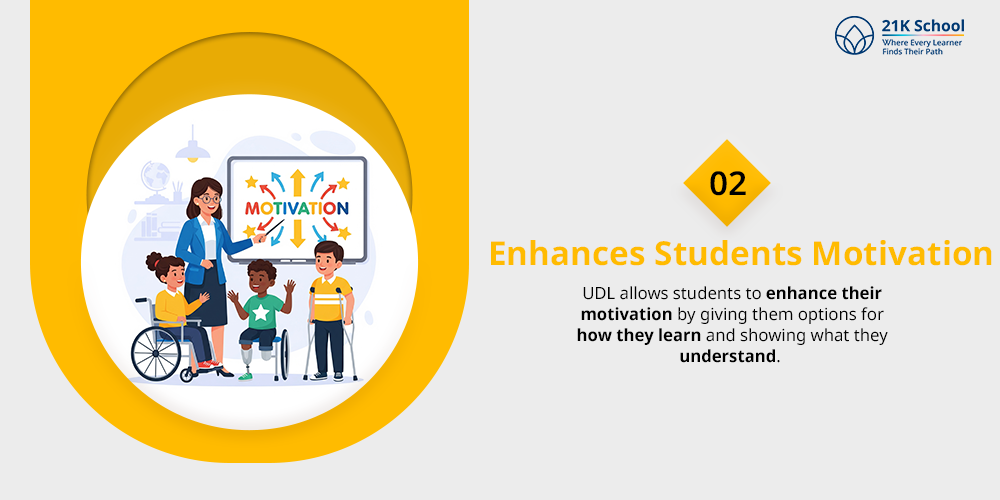
UDL allows students to enhance their motivation by giving them options for how they learn and showing what they understand.
Students are more likely to be motivated and involved in their education when they have the chance to interact with material that develops their interest.
Greater motivation helps in enhancing social-emotional learning among students and makes them confident to tackle any challenges.
3. Makes Learning Engaging
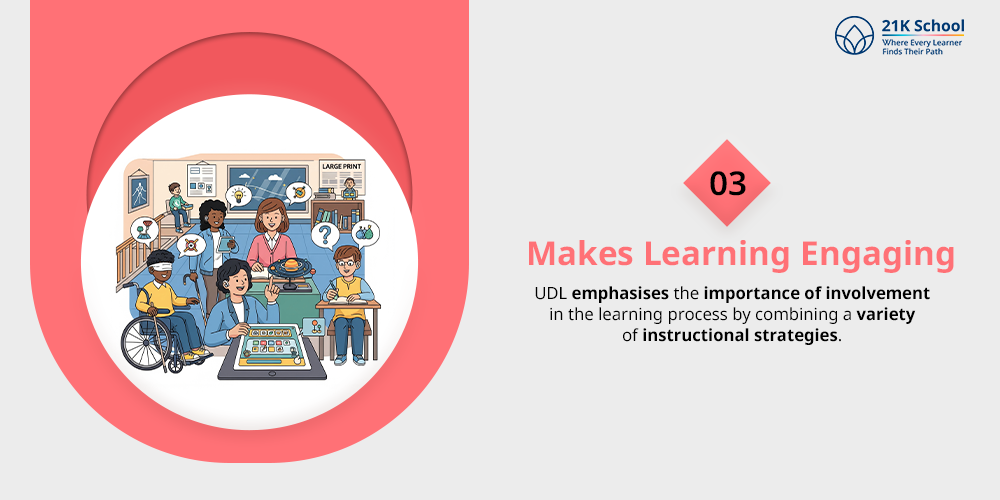
UDL emphasises the importance of involvement in the learning process by combining a variety of instructional strategies. Even the contribution of technology in education also helps in maintaining students’ attention.
By making learning engaging, students are encouraged to actively participate in the learning process. This is beneficial for students with disabilities who may struggle with the traditional education system.
4. Promotes Collaborative Learning
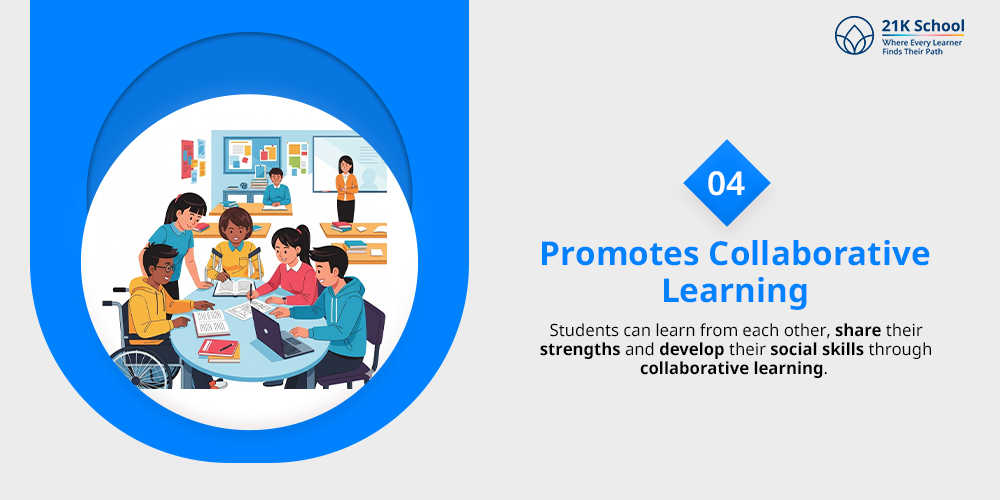
UDL creates a collaborative learning environment through peer interaction and group projects. Students can learn from each other, share their strengths and develop their social skills through collaborative learning.
The UDL framework promotes community and teamwork by making it possible for diverse groups to collaborate on projects that draw inspiration from different backgrounds.
5. Equal Accessibility
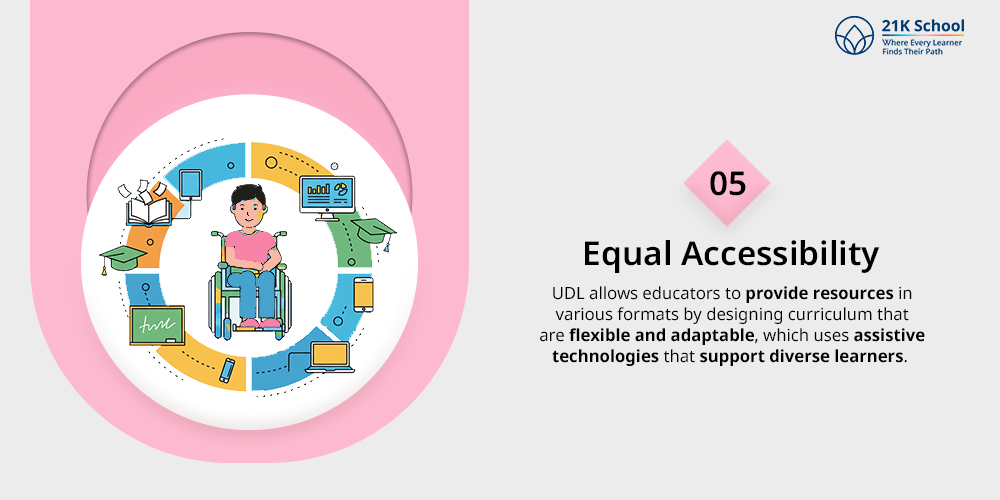
UDL promotes equal accessibility of education to students with disabilities. UDL allows educators to provide resources in various formats by designing curriculum that are flexible and adaptable, which uses assistive technologies that support diverse learners.
This commitment to accessibility ensures that students with disabilities can access the same content and learning opportunities as their peers without any barriers.
Challenges and Solutions in Applying UDL
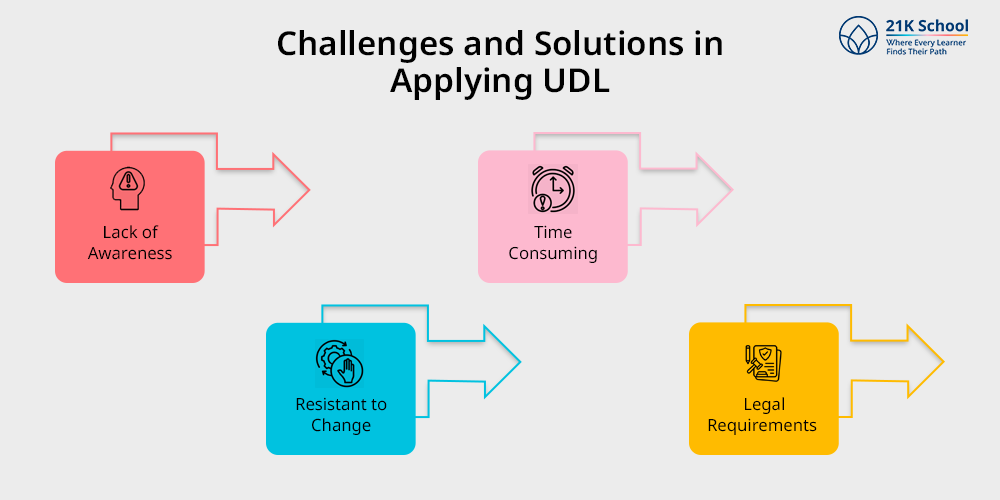
Implementing UDL faces multiple challenges, such as a lack of awareness among educators, resistance to change, and so on, that hamper the learning process of students.
Due to these challenges, it becomes very tough to implement flexible learning approaches and hinder the accessibility of education. The following are the challenges of UDL with solutions.
1. Lack of Awareness
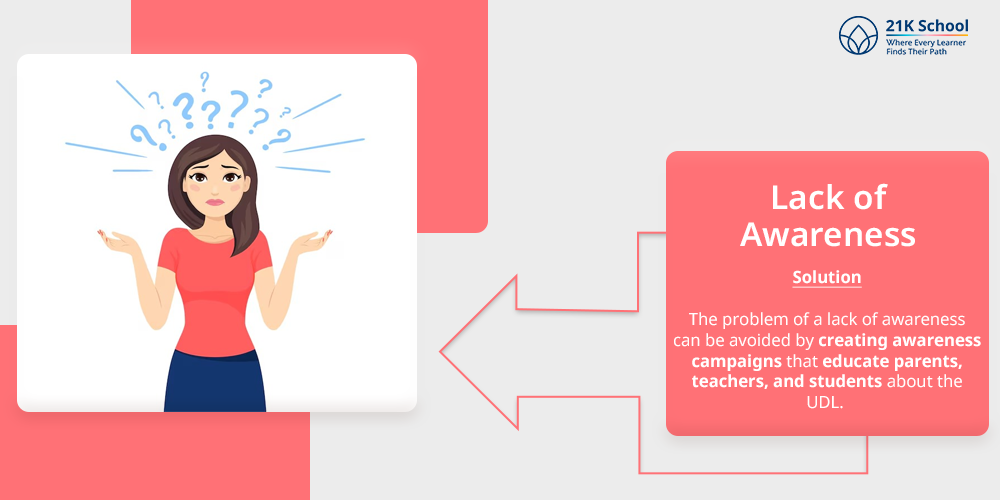
Lack of awareness is the most common challenge in implementing UDL in education.
A large number of people are not familiar with UDL principles, which emphasise modifying instructional methods and materials to accommodate different types of learners.
Due to this ignorance, UDL may be misunderstood, leading to either a partial or total rejection of its principles.
Solution for Lack of Awareness
The problem of a lack of awareness can be avoided by creating awareness campaigns that educate parents, teachers, and students about the UDL.
This may contain professional development workshops, seminars, and online courses that provide detailed information about UDL principles and practices.
Additionally, creating accessible resources and a supportive environment also helps in tackling the problem.
2. Resistant to Change
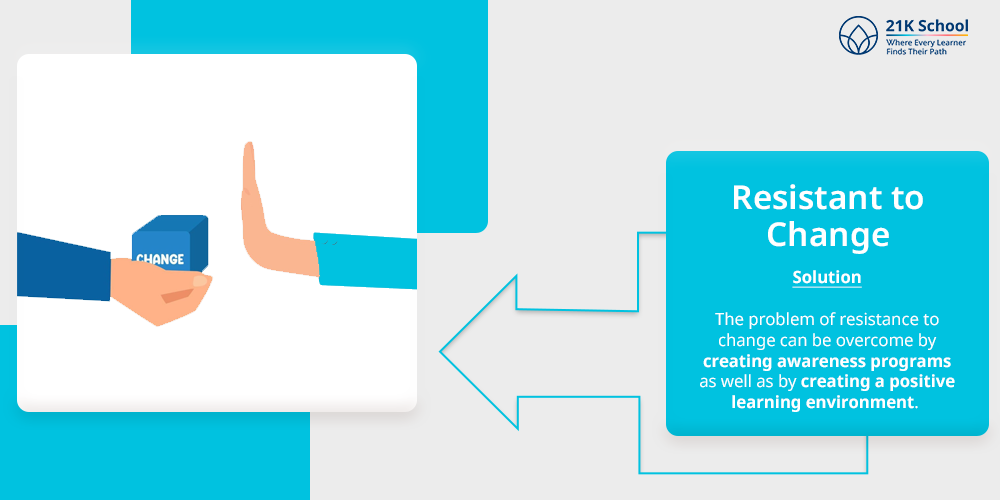
Resistance to change is another major problem in implementing UDL. As many students and teachers are adapted to traditional learning methods, adapting to a new method will make them overwhelmed.
Due to resistance to change, it reduces confidence of both teachers and students, reducing their capacity to adapt to new ideas.
Solution to Overcome Resistance to Change
The problem of resistance to change can be overcome by creating awareness programs as well as by creating a positive learning environment.
Encouraging educators to collaborate, share experiences and learn from one another can foster a community of practice that embraces change.
3. Time Consuming
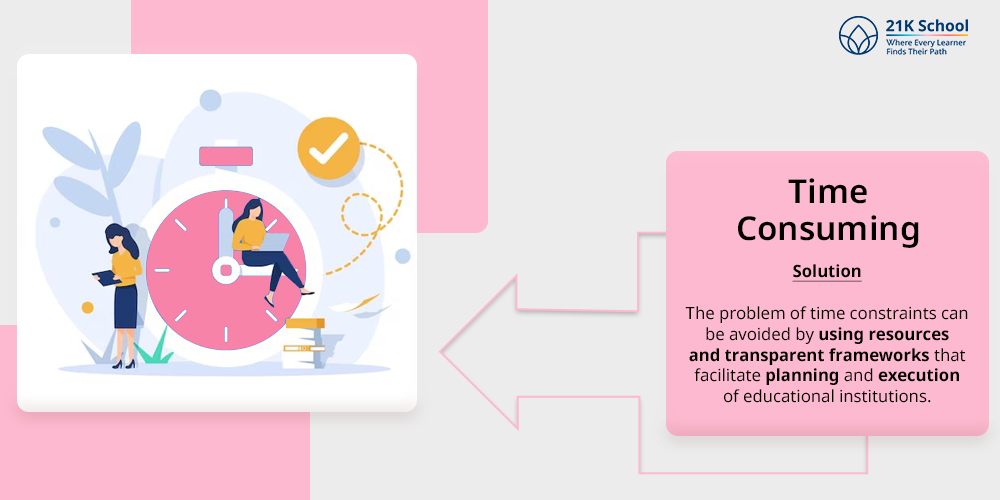
Teachers often have limited time due to administrative responsibilities, work responsibilities, and other commitments.
If educators think putting UDLs principles into practice will take a lot of time and hamper their other works.
Solution to mitigate the Problem of Time
The problem of time constraints can be avoided by using resources and transparent frameworks that facilitate planning and execution of educational institutions.
The perceived load can also be reduced by implementing UDL principles into existing lesson plans and curriculum.
4. Legal Requirements
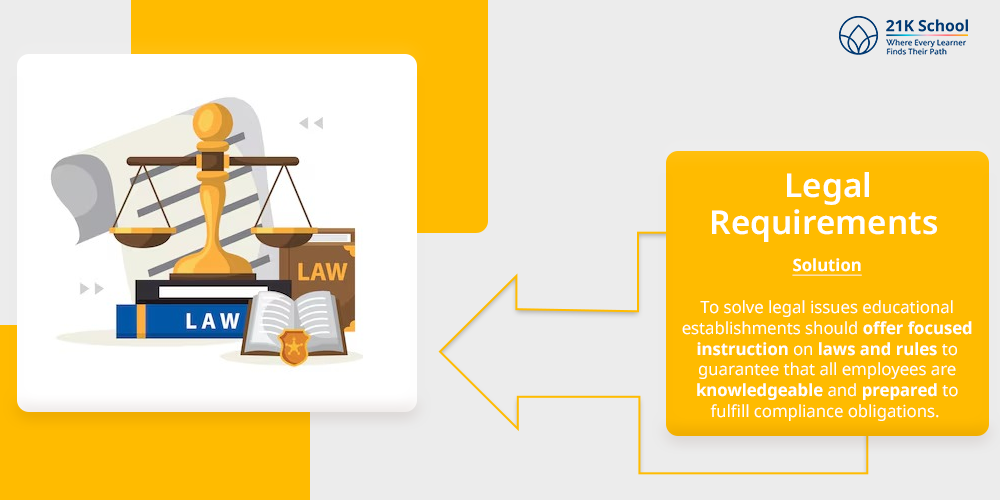
Every country and state has their own legal requirements for UDL. This complexity may cause anxiety and concern about how to successfully implement UDL while following the law.
Due to different legal requirements it becomes essential for them to abide by the laws and regulations required by different countries and educational institutions.
Solutions for Legal Requirements
To solve legal issues educational establishments should offer focused instruction on laws and rules to guarantee that all employees are knowledgeable and prepared to fulfill compliance obligations.
It can also help to create explicit policies and guidelines that specify the best ways to combine UDL with legal requirements.
Wrapping Up
The educational experiences of students with disabilities are significantly enhanced by a groundbreaking educational framework known as Universal Design for Learning (UDL).
The promotion of inclusivity, accessibility and flexibility by UDL enables all students to engage with the curriculum in ways that best suit their individual needs and wants.
Teachers are empowered by the concepts of representation, action , expression and engagement to create welcoming and supportive learning environments.
Despite certain challenges such as ignorance and resistance to change, proactive measures can help overcome them. Lastly, in addition to adhering to legal requirements, UDL gives students a sense of community and belonging.

